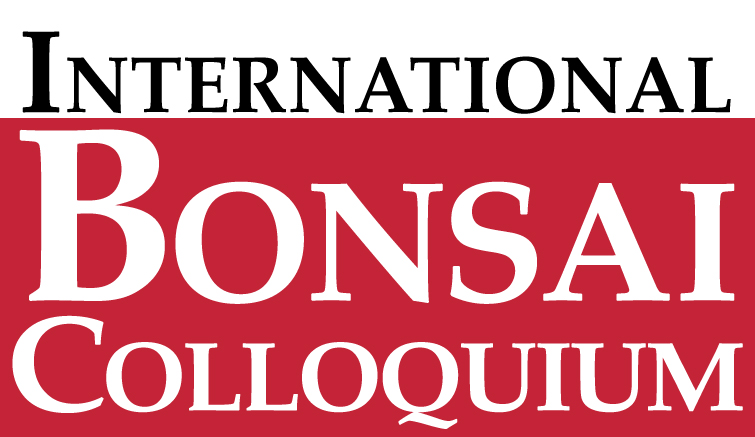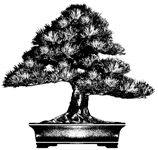International Bonsai Colloquium Workshops
|
No.1 Cork-Bark Chinese Elm
David DeGroot– $150
Cork-Bark Chinese elms are excellent for bonsai because of their unusual corky bark. Even young branches exhibit the unusual bark. The specimens selected for this workshop have been cutting grown in containers for over ten years. The upright trunks are about 2” in diameter with heights 22-28” established in 2 gallon pots and have lots of branching. After discussing how to develop Elm bonsai, David will help you develop a stunning bonsai with rough corky bark to add to your bonsai collection. |
No.2 Companion Plantings & Kusamono
Kora Dalager- $125
Companion plantings are often used to suggest seasonality in a bonsai display. Kusamono are unique plantings using grasses and other perennials and can be displayed alone. Kora will begin by explaining different types of companion plantings, how to create and care for them. Each student will create two different styles and sizes of companion plantings for a bonsai display and a kusamono. Three Japanese containers from Tokoname, Japan, will be planted with an assortment of grasses and other interesting plants. |
|
No.3 Kishu Shimpaku Juniper
R
yan Neil- $375
Shimpaku junipers are grown for the bright green delicate foliage, beautiful bark often with dead wood. They are found in nearly every bonsai collection. Ryan will first discuss his training techniques for pruning and shaping junipers before beginning to shape the workshop trees. The Kishu cultivar has a compact growth habit with thick needles. The workshop trees have heavy trunks with movement and are 18-24” tall.
|
No.4 Japanese Black Pine
Dennis Makishima- $175
The Japanese black pine is considered to be the “king” of bonsai because of its dark green needles, rugged bark and ease of growth. Dennis will begin the workshop by presenting information on the training of Japanese black pine for bonsai. The workshop trees have been grown for bonsai with heavy curved trunks, many branches and short needles. Trees are 18-24” in height. |
No.5 Chinese Quince
Kathy Shaner– $125
In addition to beautiful mottled bark, Chinese quince have delicate pink flowers in spring and large yellow fragrant fruit in autumn, often lasting throughout the winter. Seedling grown Chinese quince are 12-18” tall in one gallon pots with lovely delicate trunks. The workshop will begin with a discussion of developing flowering & fruiting bonsai before Kathy helps each student shape the trunks and branches to form a distinctive Chinese quince bonsai for their bonsai collection. |
No.6 Chinzan Satsuki Azalea
Peter Warren- $125
Chinzan satsuki azaleas are known for their prolific rose pink blossoms and small dark green glossy leaves. These specimens should be flowering for this workshop. Bushy single trunk container grown specimens 8-12” in height in ceramic bonsai pots have been chosen for this workshop. Peter will first discuss how to train Satsuki bonsai then assist each student to create their own Chinzan satsuki azalea bonsai for their collection.
|
Bonsai Display Seminar
After creating a bonsai many people want to show their art at home or in an exhibit. Although bonsai display is a personal expression, there are basic principles which are apparent in all displays. During the Bonsai Display Seminar each of our artists will display the same bonsai using various scrolls and other items to express their own style. The unique feature of the Bonsai Display Seminar is that only one artist at a time will be allowed in the room, while the others will be outside so they can’t see what the previous artists have created. This will provide for a interesting, educational and fun opportunity to see how our seven artists use the same bonsai to create their individual expressions.
|
BACK TO TOP
|





